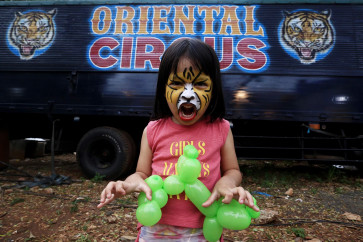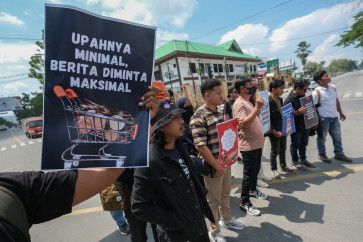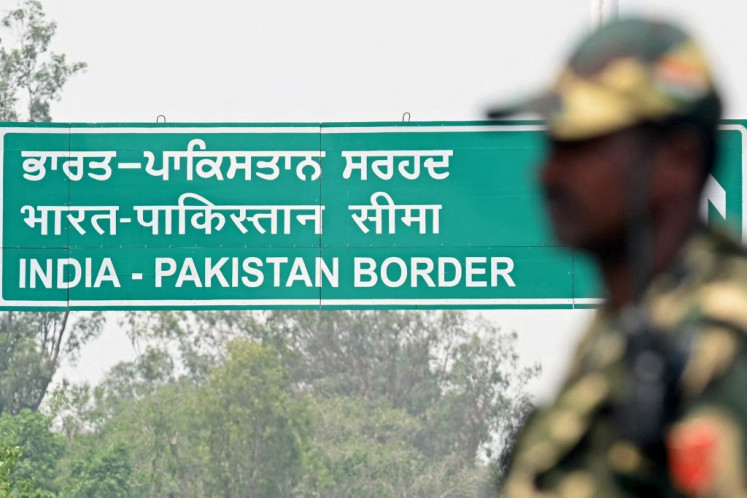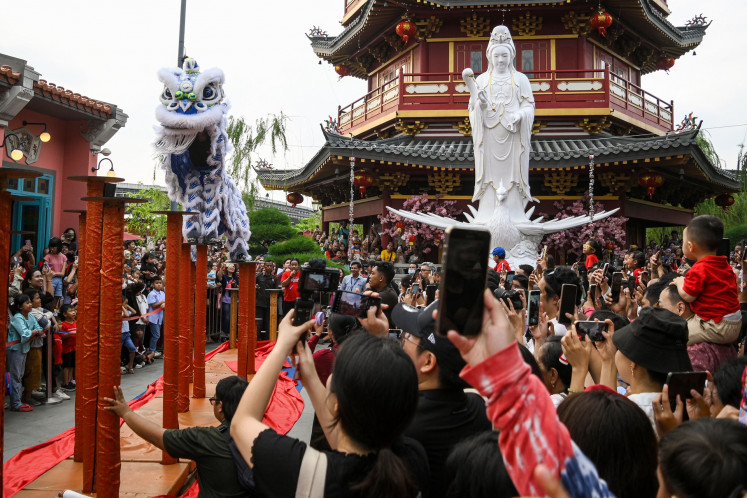Looking to the future of art in Asia
The art world is continually transforming
Change text size
Gift Premium Articles
to Anyone

T
he art world is continually transforming. At ART HK, one section was dedicated to 35 young and emerging artists under 35 years of age from around the world.
“Art Futures provides a rare and important glimpse into the next generation of talent in the contemporary art world, and the opportunity to see and buy work from the very early stages of an artist’s career,” one ART HK pamphlet noted.
Wiyoga Muhardanto was Indonesia’s representative, on show by Bandung’s PLATFORM3 gallery. He presented a deeply reflexive set of works inspired by the design aesthetic of the Japanese retailer Muji, the simple pieces commenting on Wiyoga’s own presence at the fair and the art market.
But beyond Art Futures, there are other indications of what can be expected.
The planned West Kowloon Cultural District in Hong Kong will include the M+ museum of visual culture, slated for completion in 2017. M+ executive director Lars Nittve said of the museum, “You should get a really good picture of what’s happening in Chinese contemporary art in the last 40 years — that’s a really important ambition.”
The cultural district will be situated in an area adjacent to a vibrant Kowloon neighborhood of shop houses, businesses, industrial spaces and homes, with museum materials saying it is the site’s “very ‘ordinariness’ that gives the area its value, embodying as it does the culture and history of generations of Hong Kong’s indigenous population.”
At ART HK, plans were announced for the ambitious US$279 million, 80-hectare Yellow River Arts Center in northwest China. Kwok Kian Chow, founding director of the National Art Gallery Singapore and one of the board members of the planned site, said during the launch that the place “will emphasize contemporary culture but must look at history”.
And that it is, situated as it will be along what was the Silk Road in Yinchuan, the capital of the Ningxia Autonomous Region, and a place with a Muslim population of more than 25 percent and
a culture distinct from other parts of China.
The first part of the center to open will be the Yinchuan Art Museum in 2014. Kwok said, “as stated in the recent issue of the Economist, whether you are familiar with China or not, China will be important to every person in the world … Because of that we all want to see a China that is more pluralistic, a China that is more multicultural and to begin a museum in the northwestern part of China is to show another dimension of China to the world. It is to create new kinds of constellations and nexuses.”
Alternative nexuses were evident in Indonesia’s presence at ART HK, with spaces such as the Primo Marella Gallery of Milan showing Farhan Siki’s street art-inflected works, which actually could hail from so many points around the globe. Asked what lies ahead for Indonesian art, Primo Marella told The Jakarta Post, “Indonesia has the possibility to be a leading country in art in the next 10 years.”
At ART HK, everyone seemed to agree that the future is a bright one for the country. Rifky Effendi of PLATFORM3 said, “If I compare [us] with other galleries, the young galleries, the artworks from the European region or China or Japan, I think we have a future.”
– JP/Deanna Ramsay









